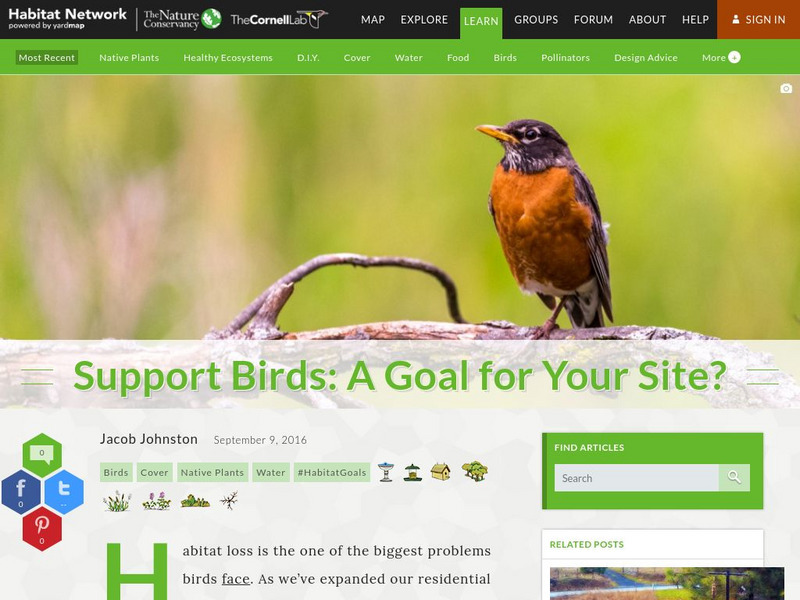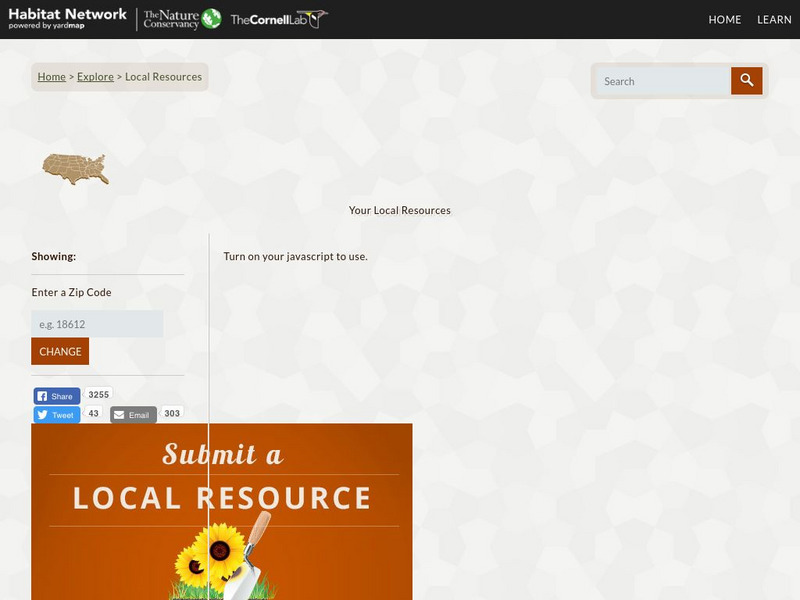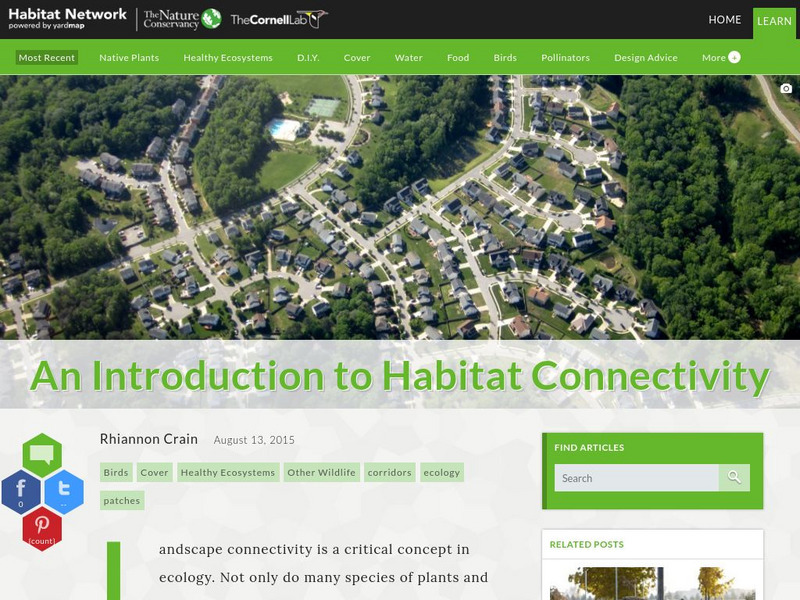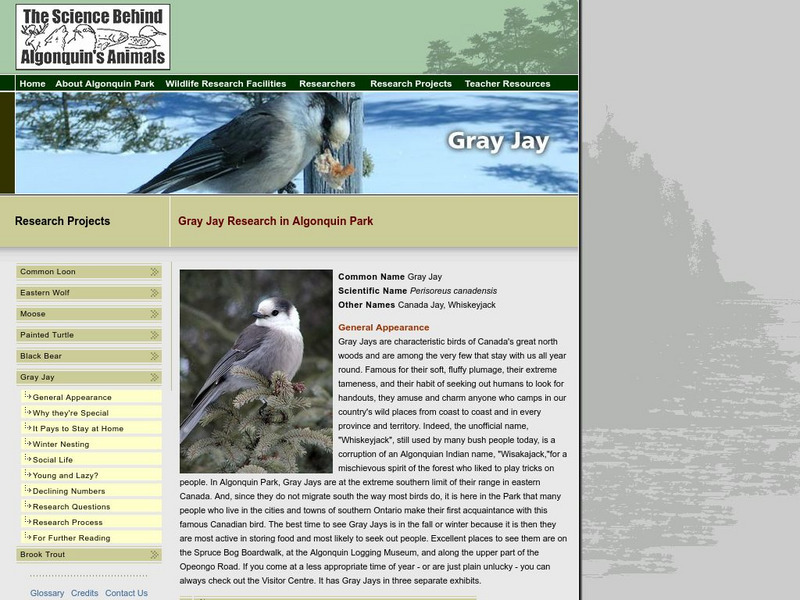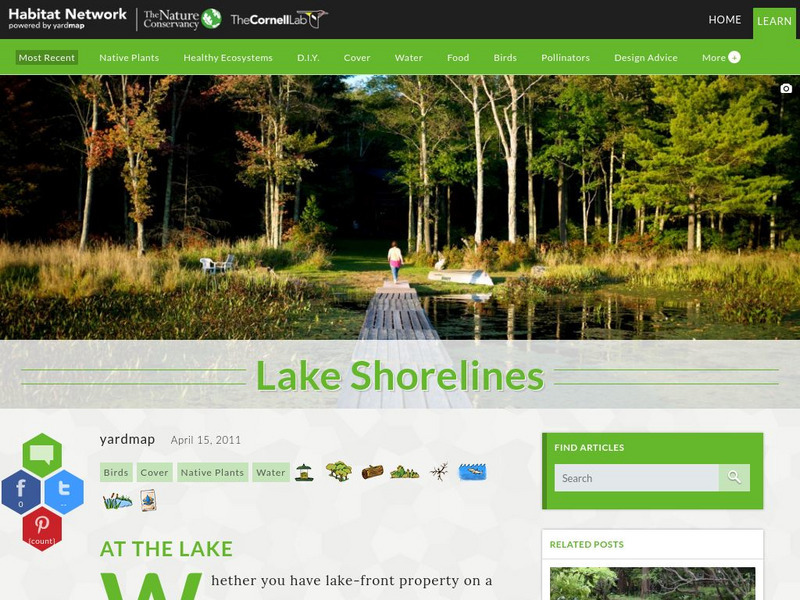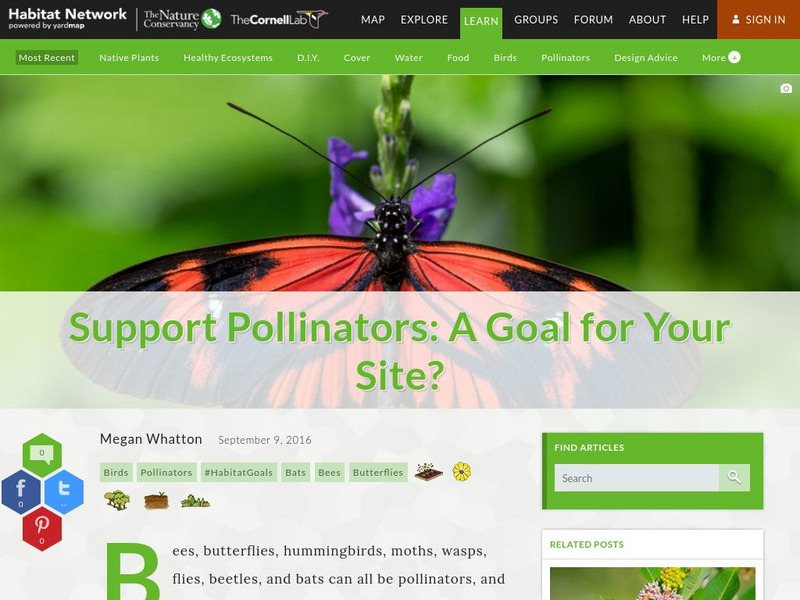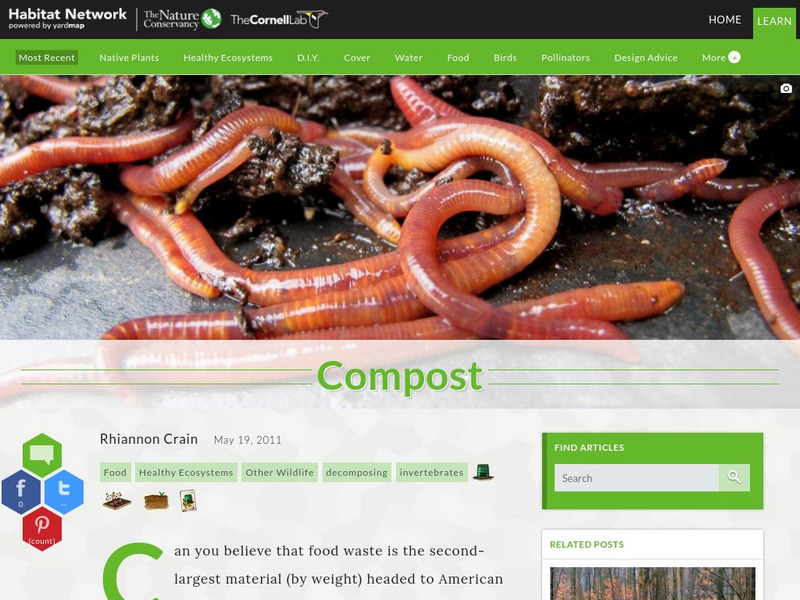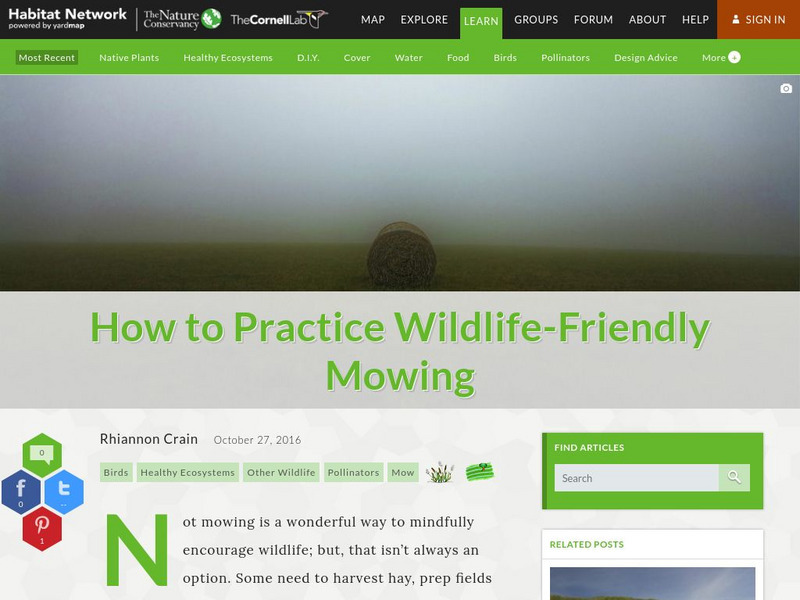Cornell Lab of Ornithology
Habitat Network: Support Birds: A Goal for Your Site?
Find out what citizen scientists can do to provide appropriate habitats for native birds.
Cornell Lab of Ornithology
Habitat Network: Sunny Georgia Strip: Design Challenge
Design challenges take photos of tricky spots in people's yards and put them out there for advice from the professionals at the Cornell Lab of Ornithology. Check out this sunny Georgia landscape in need of help.
Science Buddies
Science Buddies: M&m Survival Challenge
In the wild, there are two types of animals: the hunters and the hunted. A good predator is always on the prowl for fresh prey. What can an animal do to stay off of the menu? Find out how some animals use camouflage, and why sometimes it...
Cornell Lab of Ornithology
Habitat Network: Your Local Resources
Enter your zip code, and find out about your ecoregion, a unique combination of living and nonliving factors that set your landscape apart and determine what will flourish there.
Cornell Lab of Ornithology
Habitat Network: An Introduction to Habitat Connectivity
Find out about the idea that landscape connectivity is a critical concept in ecology.
Cornell Lab of Ornithology
Habitat Network: Habitat Feature: Bat Houses
Find out how providing bat houses can be beneficial to a habaitat.
Cornell Lab of Ornithology
Habitat Network: Habitat Feature: Sun Perches
See why many species use perches near their water source to take in the sun's warmth.
Friends of Algonquin Park
The Science Behind Algonquin's Animals: Black Bear
Known as the American Black Bear or commonly the Black Bear, information is detailed on its appearance, weight, migration patterns, food sources, major predators and breeding. This is an excellent resource for the student researcher.
Friends of Algonquin Park
The Science Behind Algonquin's Animals: Gray Jay
The Gray Jay is found in Canada's north woods and is one of the few birds that stay all year round. Learn about its appearance, why they are special, nesting, and social life along with other interesting facts.
Cornell Lab of Ornithology
Habitat Network: Discouraging Mosquitoes and Providing Habitat for Wildlife
Find out about some wildlife friendly tips for reducing mosquitoes in yards.
Cornell Lab of Ornithology
Habitat Network: Habitat Feature: Logs
Evaluate the importance of a fallen tree in a forest ecosystem.
Cornell Lab of Ornithology
Habitat Network: Habitat Feature: Evergreens
Learn how evergreen plants, both trees and shrubs have important roles to play in landscaping- from aesthetic to ecological.
Cornell Lab of Ornithology
Habitat Network: Vernal Pools Connect Otherwise Isolated Habitats
See how the change in weather and precipitation creates vernal pools and a connection of isolated habitats.
Cornell Lab of Ornithology
Habitat Network: Pollinators at Home: Intro to Pollinator Gardening
Find out how to provide native plants that foster the activity of insects and other pollinators.
Cornell Lab of Ornithology
Habitat Network: Lake Shorelines
Become a citizen scientist, and find out how to turn a shoreline landscape into a bird haven.
Cornell Lab of Ornithology
Habitat Network: At a Park
See why public lands are absolutely essential for effective bird conservation.
Cornell Lab of Ornithology
Habitat Network: Support Pollinators: A Goal for Your Site?
Find out the three easy steps citizens can take to support pollinators including providing shelter and nesting materials, food, and avoiding using chemicals like pesticides and fertilizers.
Cornell Lab of Ornithology
Habitat Network: Understand Planting Tools: Plant Hardiness Zones vs. Ecoregions
Understand what plants to put in the ground that- barring predation or other unforeseen setbacks- will grow and thrive.
Cornell Lab of Ornithology
Habitat Network: Ozark Trials: Design Challenge
Design Challenge takes photos of tricky spots in people's yards, like this one in Arkansas, and puts them out there for advice from the professionals at the Cornell Lab of Ornithology.
Cornell Lab of Ornithology
Habitat Network: Compost
Are people wasting yard waste? Why not turn a small corner of a backyard into a nutrient source that not only replenishes the soil but supports the base of the bird food pyramid.
Cornell Lab of Ornithology
Habitat Network: Must We Mow? Increase Wildlife Value of Working Landscapes
Learn about the ecological benefits of allowing a landscape to grow naturally without mowing.
Cornell Lab of Ornithology
Habitat Network: How to Practice Wildlife Friendly Mowing
When it is time to mow, find out the simple strategies to consider to minimize negative impacts on wildlife.
Cornell Lab of Ornithology
Habitat Network: Be Healthier: A Goal for Your Site?
Learn about the many small steps people can take to improve one's health and the health of one's community.
Cornell Lab of Ornithology
Habitat Network: Install Edible Gardens
Find out the benefits of planting a garden that provides a sustainable source of food for people.


